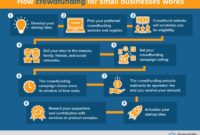Trading the EUR/USD currency pair is one of the most popular activities in the forex market. Known for its liquidity and volatility, the Euro to US Dollar pair provides numerous opportunities for traders. In this article, we will explore everything you need to know about how to trade EUR/USD, including strategies, analysis techniques, and common pitfalls to avoid.
Table of Contents
ToggleUnderstanding the EUR/USD Pair
What is EUR/USD?
The EUR/USD pair represents the exchange rate between the Euro (EUR) and the US Dollar (USD). It indicates how many US Dollars one Euro can buy. For example, if the EUR/USD exchange rate is 1.20, it means 1 Euro can be exchanged for 1.20 US Dollars.
Importance of EUR/USD in Forex Trading
The EUR/USD pair is significant for several reasons:
- High Liquidity: Being the most traded currency pair in the world, it typically has the tightest spreads, making it an ideal choice for traders.
- Economic Influence: The Eurozone and the United States are two of the largest economies globally. Economic events and indicators from these regions can significantly impact the exchange rate.
- Volatility: While it is relatively stable compared to other pairs, the EUR/USD can still experience significant fluctuations, particularly during economic news releases.
How to Analyze the EUR/USD Pair
Fundamental Analysis
Fundamental analysis involves evaluating economic indicators and geopolitical events that affect the EUR/USD exchange rate. Key indicators include:
- Interest Rates: The interest rate set by the European Central Bank (ECB) and the Federal Reserve (Fed) can significantly influence the EUR/USD pair. Higher interest rates typically strengthen a currency.
- GDP Reports: Gross Domestic Product (GDP) growth rates for both the Eurozone and the United States provide insight into economic health. Strong GDP growth in either region can lead to currency appreciation.
- Employment Data: Employment reports, such as the Non-Farm Payroll (NFP) data in the U.S., can impact the USD’s strength against the Euro.
Technical Analysis
Technical analysis involves using historical price data and charts to identify trends and patterns. Here are some common tools used in technical analysis for the EUR/USD pair:
1. Trend Lines
Trend lines help traders visualize the direction of the market. An upward trend line indicates bullish sentiment, while a downward trend line suggests bearish sentiment.
2. Support and Resistance Levels
These levels indicate where the price has historically struggled to break through (resistance) or where it tends to bounce back up (support). Identifying these levels can help traders make informed decisions about entry and exit points.
3. Moving Averages
Moving averages, such as the Simple Moving Average (SMA) and the Exponential Moving Average (EMA), can help smooth out price data and identify trends. A crossover of short-term moving averages over long-term ones can indicate potential buy or sell signals.
Sentiment Analysis
Understanding market sentiment can also be beneficial when trading the EUR/USD pair. Sentiment analysis assesses the mood of the market and can be gauged through:
- Commitment of Traders (COT) Reports: These reports show the positions of various market participants and can provide insight into market sentiment.
- News Events: Monitoring economic news releases and geopolitical events can help traders gauge the market’s reaction and sentiment toward the EUR/USD pair.
Developing a Trading Strategy
Choosing Your Trading Style
Before diving into trading, it’s essential to choose a trading style that suits your personality and lifestyle. Here are three popular styles to consider:
Day Trading
Day trading involves making multiple trades within a single day to capitalize on short-term price movements. This style requires a keen understanding of technical analysis and fast decision-making.
Swing Trading
Swing trading involves holding positions for several days to take advantage of expected price movements. This approach allows for more in-depth analysis and less pressure than day trading.
Position Trading
Position trading focuses on long-term trends and involves holding positions for weeks, months, or even years. This style is more suitable for those who prefer a less hands-on approach.
Risk Management
Effective risk management is crucial for successful trading. Here are some strategies to consider when trading the EUR/USD pair:
- Set Stop-Loss Orders: Always use stop-loss orders to minimize potential losses. A good rule of thumb is to risk only a small percentage of your trading capital on a single trade.
- Diversify Your Trades: Avoid putting all your capital into one trade. Diversifying across different currency pairs can help mitigate risk.
- Use Leverage Wisely: Leverage can amplify profits, but it also increases risk. Use leverage cautiously and be aware of the potential for losses.
Practical Steps to Trade EUR/USD
Step 1: Choose a Reputable Broker
Selecting the right broker is essential for trading the EUR/USD pair effectively. Look for a broker that offers:
- Competitive Spreads: Lower spreads can lead to higher profitability.
- User-Friendly Trading Platform: A good trading platform should be easy to navigate and provide essential tools for analysis.
- Regulation: Ensure the broker is regulated by a reputable authority, providing some level of security for your funds.
Step 2: Open a Trading Account
Once you have chosen a broker, you’ll need to open a trading account. Most brokers offer different types of accounts, such as:
- Standard Accounts: Suitable for most traders, offering access to various trading tools and features.
- Mini and Micro Accounts: These accounts allow traders to trade with smaller amounts, which is ideal for beginners.
- Demo Accounts: A demo account allows you to practice trading without risking real money, making it an excellent option for newcomers.
Step 3: Fund Your Account
After opening your trading account, you’ll need to deposit funds. Brokers typically offer various funding options, such as bank transfers, credit cards, and e-wallets. Make sure to understand any fees associated with deposits and withdrawals.
Step 4: Start Trading
Now that your account is funded, you can start trading. Here’s a simplified process:
- Choose Your Trade Size: Determine how much of the EUR/USD pair you want to trade.
- Analyze the Market: Use fundamental and technical analysis to decide whether to buy or sell the pair.
- Place Your Trade: Enter your buy or sell order on your trading platform.
- Set Stop-Loss and Take-Profit Orders: Protect your investment by setting stop-loss and take-profit levels.
- Monitor Your Trade: Keep an eye on your trade and adjust your strategy as necessary.
Common Mistakes to Avoid
Overtrading
One common pitfall for traders is overtrading, which can lead to significant losses. Stick to your trading plan and avoid making impulsive decisions.
Ignoring Risk Management
Neglecting risk management can be disastrous in forex trading. Always use stop-loss orders and manage your position sizes carefully.
Chasing Losses
Attempting to recover losses by taking bigger risks often leads to even more significant losses. It’s essential to maintain discipline and stick to your strategy.
Relying Solely on Technical Analysis
While technical analysis is crucial, it’s important not to ignore fundamental factors. Economic news and geopolitical events can have a substantial impact on the EUR/USD pair.
Conclusion
Trading the EUR/USD pair can be a rewarding endeavor for those willing to put in the time and effort to understand the market. By utilizing fundamental and technical analysis, developing a robust trading strategy, and implementing effective risk management techniques, you can increase your chances of success.
For further resources and insights into forex trading, visit Investopedia. This comprehensive guide should provide you with a solid foundation for trading EUR/USD effectively. Happy trading,




